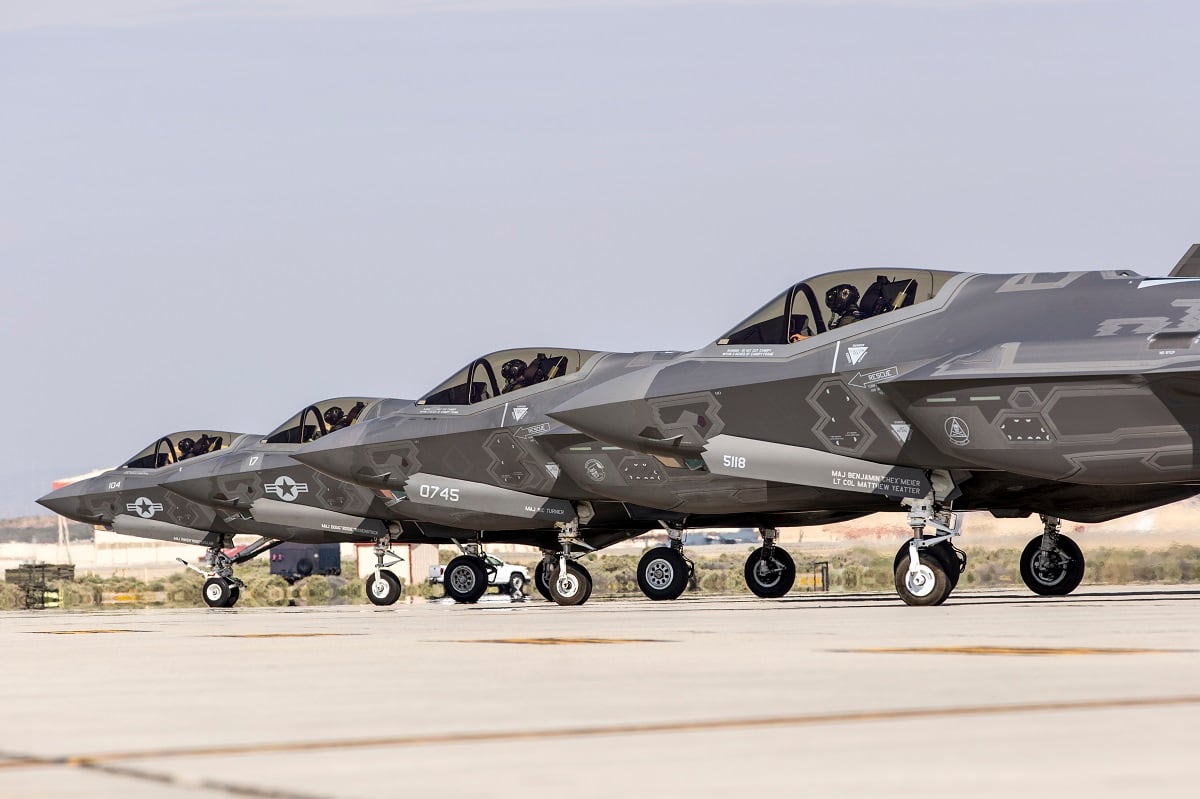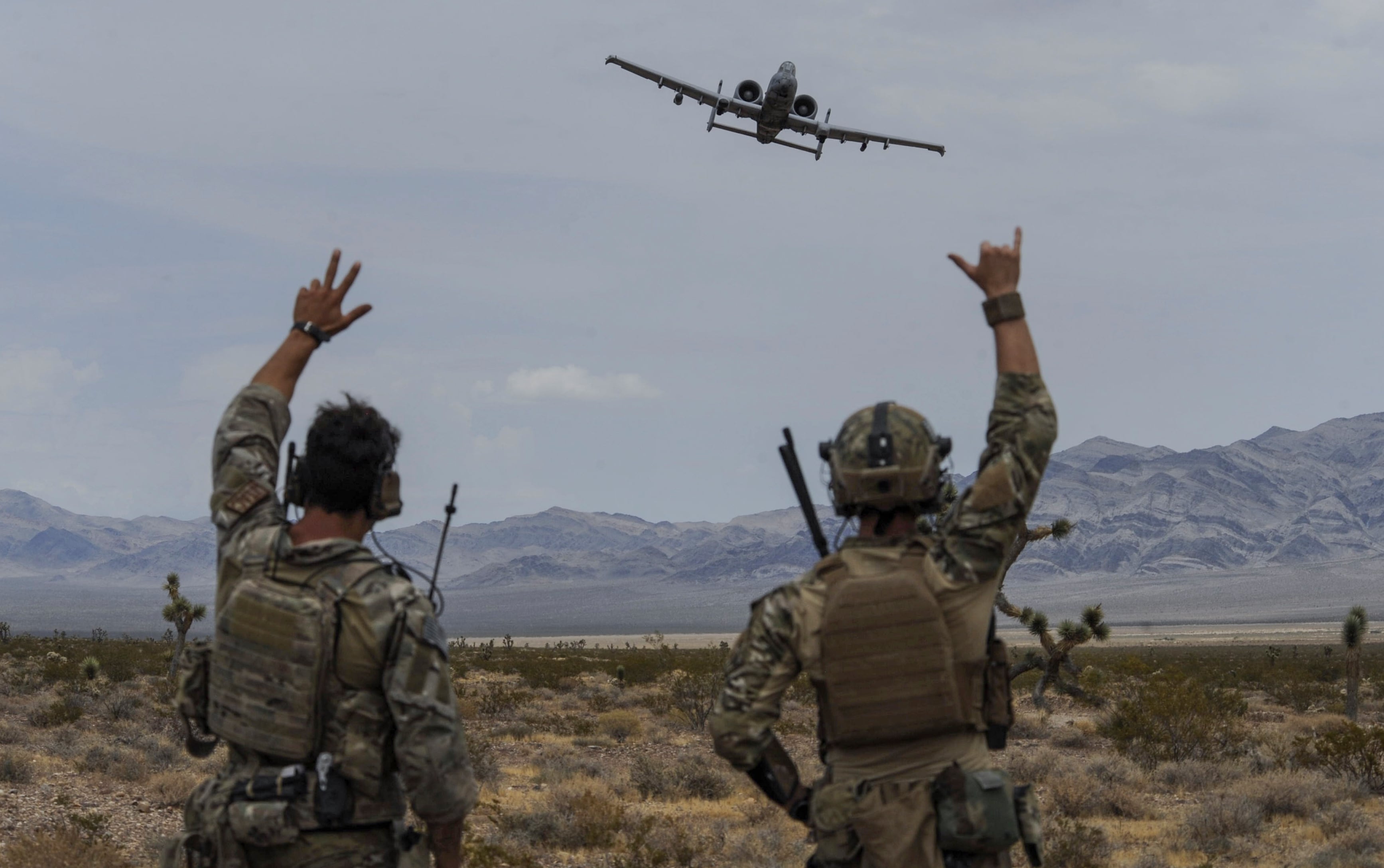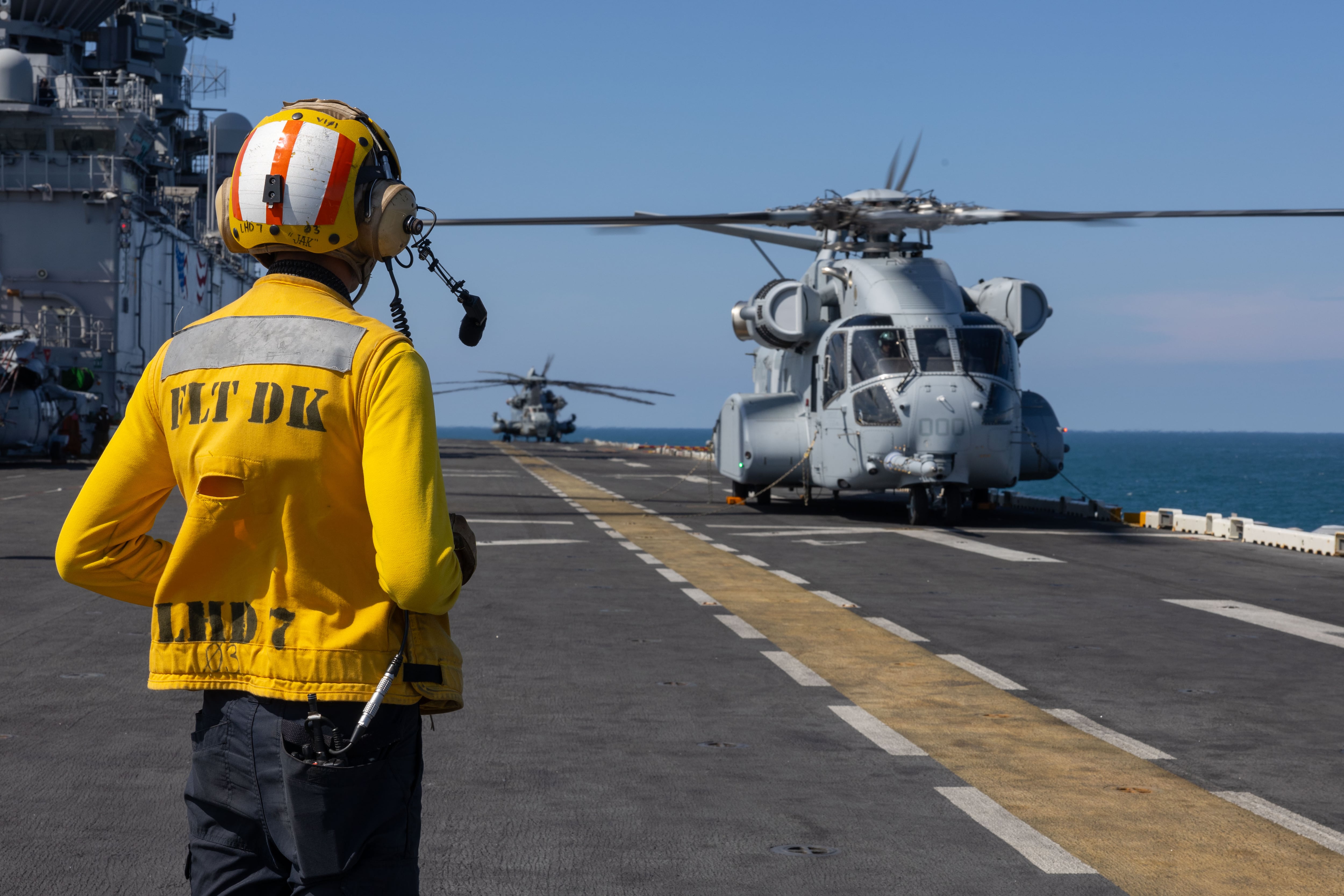The much-anticipated A-10 vs. F-35 close-air support fly-off has wrapped up before many people even realized the tests were happening, but a government watchdog group claims the tests were rigged in favor the Lightning II, a fifth-generation multirole fighter.
The Project On Government Oversight revealed Tuesday that the tests were underway at Marine Corps Air Station Yuma in Arizona and Naval Air Weapons Station China Lake in California. According to a testing schedule POGO reviewed, the one-week fly-off began July 5 and concluded Thursday.
Citing sources “closely associated with the fly-off,” POGO reported that large-scale Army and Marine ground units did not participate in the fly-off. Given those services’ significant stake in receiving effective close-air support, their absence was conspicuous.
“A close-air support test should involve large numbers of ground troops in a highly fluid combat simulation in varied terrain, across many days,” wrote POGO’s Dan Grazier. “It should test the pilot’s ability to spot targets from the air in a chaotic and ever-changing situation. The test should also include a means of testing the program’s ability to fly several sorties a day, because combat doesn’t pause to wait for airplanes to become available.”
Rather than consulting the service’s own experts on close-air support, the Air Force turned over test design to a consultant that has a contract to provide adversary aircraft for air-combat training, “especially F-35 squadrons,” POGO reported.
The testing schedule, according to POGO’s sources, allotted the same amount of time and sorties to both aircraft, despite the A-10’s ability to loiter over the battlefield, a major strength. It also downgraded a second major strength of the Warthog: limiting its GAU-8/A 30-mm Gatling gun to a third of its usual ammunition.
The tests also hid the F-35′s weaknesses, according to POGO. Bomb loads were reduced in one test to improve the plane’s maneuverabilty at lower altitudes; the operating ceiling of 10,000 feet ignored that fact that close-air support missions are often carried out at an altitude of 1,000 feet or less, where the A-10 excels; and the high-visibility targets made them easier to hit for the F-35, “where visibility from the cockpit is inferior to the A-10′s,” POGO wrote.
A-10 supporters on Capitol Hill, notably Rep. Martha McSally, R-Ariz., a former Warthog pilot and squadron commander, have said a fly-off would prove the F-35 is not capable of fully replacing the A-10, which was purpose built for the close-air support mission and has been in use since the 1970s.
RELATED

Regarding the secrecy, Army Lt. Col. Michelle Baldanza, a spokeswoman for the Pentagon’s Director of Operational Test and Evaluation, said the tests shouldn’t have surprised anyone since they were being conducted in accordance with plans that dated back to 2016 and were approved within the 2017 Defense Authorization Act. But she did not address the fact that, although the fly-off was indeed widely anticipated, neither the Air Force nor the Defense Department announced that it was happening now.
“Additionally, these comparison test events are being conducted as outlined in the April 2018 DOT&E-approved Pre-[Initial Operational Test and Evaluation] Increment 2 test plan,” Baldanza said in an emailed statement.
Baldanza did not address why Army or Marine representives were allegedly not at the fly-off event, but noted that “a Joint Terminal Attack Controller (JTAC), surface-to-air threats [and] some live and inert air-to-ground weapons employment” were all part of the evaluation.

JTAC is a qualification allowing a ground troop to clear aircraft to strike targets when friendly forces are in the area. It is commonly held by members of the Air Force combat control and tactical air control party career fields. However, some soldiers and Marines can and do earn the qualification.
A battlespace can be chaotic, and portions of a ground unit may sometimes maneauver without a JTAC. Coordination between aircrews and ground forces will be less practiced in situations like this, and the responsibility to ensure weapons hit the proper targets falls more on pilots. POGO’s report highlights this concern.
Baldanza did add that mobile targets, such as “moving target vehicles and armored vehicles across different conditions, including day/night and low/medium threat levels," played a part in the fly-off. However, if close-air support was only tested under conditions where a small number of troops with a skilled JTAC are present, the evaluation could have missed a large portion of the F-35′s possible future missions.
Before the Air Force can fully adopt the F-35, it is contractually obligated to demonstrate that the stealthy can provide better mission effectiveness than each of the older aircraft it is slated to replace.
A-10 defenders, including some members of Congress, have insisted the F-35 cannot support ground troops the way the venerated Warthog can. To settle the debate, Congress' detailed plans for the fly-off, approved nearly three years ago, required an assessment of each aircraft’s ability to accurately identify enemy targets and friendly forces during day and night, ability to loiter over a target for an extended period of time and ability to conduct a strike without direction from a joint terminal attack controller.
Air Force leaders initially resisted the fly-off, claiming the F-35 would perform the mission differently than the A-10, so it wouldn’t be fair to compare the two. What the force has done instead, according to POGO, is launch a series of close-air support tests intentionally designed to favor the new multi-mission fighter over the battle-proven A-10.
After the tests are completed, the Pentagon’s independent weapons evaluators will analyze the flight test data and the results will be provided in a report, Baldanza said.
RELATED

The results of the fly-off will help determine how much more life the A-10 has within the Air Force. In April, Lt. Gen. Jerry Harris, deputy chief of staff for strategic plans and requirements, told a House Armed Services Committee panel that the comparative tests would help inform how many more wings the Air Force would produce for the Warthogs, many of which are at risk of being grounded before fiscal 2025 unless replacements are installed.
Kyle Rempfer was an editor and reporter who has covered combat operations, criminal cases, foreign military assistance and training accidents. Before entering journalism, Kyle served in U.S. Air Force Special Tactics and deployed in 2014 to Paktika Province, Afghanistan, and Baghdad, Iraq.





